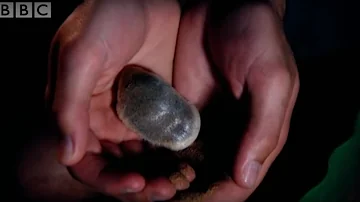
Golden Mole
Chrysochloris asiatica

Meet the Golden Mole
Golden moles are small, burrowing mammals native to southern Africa, renowned for their iridescent, metallic fur that shimmers in golden, bronze, or green hues. Despite their name and appearance, golden moles are not true moles and are more closely related to tenrecs. They possess powerful, spade-like forelimbs for digging and have vestigial eyes covered by skin and fur, rendering them functionally blind. Golden moles spend most of their lives underground, navigating sandy soils and searching for invertebrates and small vertebrates to eat.
Classification
Mammal
Habitat
Subterranean burrows in grasslands, forests, savannas, and sand dunes
Diet
Carnivore
Lifespan
3-6 years
Conservation
Vulnerable
Weight
20-120 grams
📖Fascinating Facts
Expert Diggers
Golden moles have highly specialized forelimbs and claws, enabling them to dig extensive tunnel systems underground.
Shimmering Fur
Their fur refracts light, giving it a metallic golden or green sheen, which inspired their common name.
Sensitive to Vibrations
Golden moles rely on their acute sense of hearing and sensitivity to ground vibrations to detect prey and avoid predators.
📋Detailed Description
The Cape golden mole (Chrysochloris asiatica) is a small, robust mammal typically measuring 8–14 cm in length and weighing between 20–80 grams. Its most striking feature is its dense, silky fur, which exhibits a metallic sheen in hues of gold, bronze, or green, resulting from unique microscopic structures in the hair that refract light. The body is streamlined for a subterranean lifestyle, with a conical head, no external ears, and vestigial eyes completely covered by skin and fur, rendering the animal functionally blind. The forelimbs are highly specialized, short, and muscular, with enlarged, spade-like claws on the third digit, ideal for powerful digging through sandy or loamy soils. The hind limbs are smaller and used primarily for pushing soil. The golden mole's skull is wedge-shaped, and its auditory system is adapted for detecting vibrations rather than airborne sounds, allowing it to sense prey and predators underground. Its metabolic rate is low, and it can enter torpor during periods of food scarcity or extreme temperatures. Golden moles are solitary and territorial, with individuals maintaining overlapping home ranges. They spend nearly their entire lives underground, emerging only rarely, and construct complex tunnel systems for foraging and nesting. Their diet consists mainly of invertebrates such as earthworms, insects, and larvae, but they may also consume small vertebrates when available.
💡 Did you know?
Despite their name, golden moles are not closely related to true moles and belong to their own unique mammalian order, Afrosoricida.
🔬Research & Sources
Wikipedia Summary
Golden moles are small insectivorous burrowing mammals endemic to Sub-Saharan Africa. They comprise the family Chrysochloridae and as such they are taxonomically distinct from the true moles, family Talpidae, and other mole-like families, all of which, to various degrees, they resemble as a result of evolutionary convergence. There are 21 species. Some are relatively common, whereas others are rare and endangered.
Last Modified: 1/13/2025
🎭Behavior & Social Structure
Golden moles are predominantly solitary and exhibit strong territoriality, with individuals marking their tunnels using scent glands. They are primarily nocturnal or crepuscular, although activity patterns can vary depending on temperature and soil moisture. Foraging involves tunneling just below the surface, where they hunt for invertebrates by detecting ground vibrations with their highly sensitive cochlea and ossicles. They use rapid, lateral head movements to locate prey and employ their powerful forelimbs to dig and capture food. Golden moles are known to enter periods of torpor, especially during cold or dry seasons, reducing metabolic activity to conserve energy. Social interactions are minimal outside of the breeding season, and aggressive encounters may occur if territories overlap. Communication is primarily through scent marking and possibly low-frequency sounds or substrate vibrations.
👶Reproduction & Life Cycle
Breeding in Chrysochloris asiatica typically occurs during the southern hemisphere's spring and early summer (September to January), coinciding with increased food availability. The species is believed to be polygynous, with males seeking out females by following scent trails. After mating, gestation lasts approximately 4–6 weeks. Females give birth to 1–3 altricial young in a specially constructed nesting chamber lined with plant material. The young are born blind and hairless, remaining in the nest for several weeks while the mother provides food and protection. Weaning occurs at around 4–5 weeks, after which juveniles disperse to establish their own territories. Parental care is provided solely by the female; males do not participate in rearing offspring.
🛡️Adaptations & Survival
Golden moles possess a suite of remarkable adaptations for fossorial life. Their fur is not only iridescent but also water-repellent and dirt-shedding, reducing friction and keeping the animal clean underground. The absence of external eyes and ears minimizes injury while burrowing. Their ossified, wedge-shaped skulls and reinforced snouts help them push through compacted soil. The hypertrophied malleus bone in their middle ear is among the largest relative to body size in mammals, enhancing their ability to detect seismic vibrations—an adaptation critical for locating prey and avoiding predators underground. Their metabolic rate is highly flexible, allowing entry into torpor to survive periods of food scarcity. Behavioral adaptations include constructing deep tunnels for nesting and shallow foraging tunnels, as well as the ability to plug tunnel entrances to maintain humidity and temperature.
📚Research Sources
🎨Cultural Significance
Golden moles are not prominent in local folklore or mythology, likely due to their secretive, subterranean existence. However, their iridescent fur has occasionally been used in traditional adornments or as curiosities. In some southern African cultures, golden moles are regarded as symbols of good luck or fertility, although such beliefs are not widespread. Their unique appearance and evolutionary distinctiveness have made them subjects of scientific and conservation interest, highlighting the importance of preserving Africa's endemic biodiversity.
🔬Recent Research & Discoveries
Recent research has focused on the biomechanics of golden mole digging, revealing the efficiency of their forelimb and skull adaptations. Studies using micro-CT scans have elucidated the structure of their middle ear, confirming their exceptional sensitivity to seismic vibrations. Genetic analyses have clarified the evolutionary relationships within Chrysochloridae, supporting their close affinity to tenrecs and afrotherian mammals rather than true moles. Ongoing conservation research includes the development of non-invasive monitoring techniques, such as environmental DNA (eDNA) sampling and ground-penetrating radar, to better estimate population sizes and distributions. There is also increasing interest in the effects of climate change on soil-dwelling mammals and the potential for golden moles to serve as indicators of soil health and ecosystem integrity.
🎥Wildlife Videos

Blind golden mole looks for termites - Planet Earth: Deserts - BBC
#bbc.
BBC

The Golden Mole: Completely Blind and No Bigger Than A Ping Pong Ball - Planet Earth II
The Golden Mole may be blind and tiny, but it can strike at its prey with pinpoint accuracy. Coming to BBC America in early 2017.
BBC America

Adorable Golden Mole Is Sneaky | Animal Camera | BBC
Wildlife expert Steve Leonard travels to the desert and finds a golden mole hiding. Subscribe: http://bit.ly/BBCStudios WATCH ...
BBC Studios

Desert Golden Mole
I just fell in love with this little golden mole! (: This is from the first episode of "Night on Earth" on Netflix. Season 1, episode 1.
Amy Putnam

50|50 Series: In Die Spervuur - Golden Mole
"In die Spervuur" is an environmental series of separate inserts that SANHU Productions were commissioned to produce in 2016 ...
SANHU Productions

Rediscovering the Shimmering Golden Mole: A Remarkable Wildlife Comeback
Rediscovering the Shimmering Golden Mole: A Remarkable Wildlife Comeback Embark on a remarkable journey with us as we ...
CuteAnimal_JC
🌍Habitat Information
The Golden Mole typically inhabits Subterranean burrows in grasslands, forests, savannas, and sand dunes environments. Golden Moles have adapted to their environments with specialized features and behaviors.
Primary Habitat:
Subterranean burrows in grasslands, forests, savannas, and sand dunes
More detailed habitat information will be available soon.
🛡️Conservation Status
The Golden Mole is currently classified as Vulnerable. Conservation efforts are crucial for preserving this species for future generations.
Common Threats:
- 🏠Habitat loss and fragmentation
- 🌡️Climate change impacts
- 🎯Hunting and poaching
- 🏭Human-wildlife conflict
⚠️Threats & Conservation Challenges
The primary threats to golden moles are habitat loss and fragmentation due to agriculture, urbanization, and mining, which destroy or degrade their subterranean environments. Pesticide use can reduce invertebrate prey populations, indirectly impacting mole survival. Some species are also threatened by invasive species, predation by domestic animals, and climate change, which alters soil moisture and temperature regimes. The Cape golden mole is listed as Vulnerable by the IUCN, with population declines observed in areas of intense human activity. Conservation challenges include the difficulty of surveying and monitoring populations due to their cryptic, subterranean habits, and a general lack of public awareness or appreciation for their ecological role.
🔬Scientific Classification
Scientific Name
Chrysochloris asiatica
Classification Hierarchy
🔍 About Taxonomic Classification
Taxonomic classification is a hierarchical system used by scientists to classify and organize living organisms based on shared characteristics and evolutionary relationships.
The system moves from broad categories (Kingdom) to increasingly specific ones, with each animal's scientific name typically consisting of its Genus and species.
📝Community Notes
Share your observations and insights about the Golden Mole with our community of wildlife enthusiasts.
Join Our Community
Sign in to share your observations and connect with fellow wildlife enthusiasts.
Sign In to ContributeNo community notes yet
Be the first to share your observations about the Golden Mole!
Explore Golden Mole
Select a tab above to learn more about this amazing animal.
📸Photo Gallery
No photos available for this animal yet.
🌟Discover More Wildlife
Continue your journey of discovery with more fascinating animals from our database
